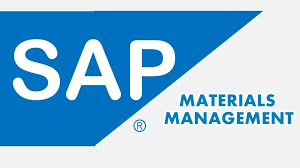In the complex world of enterprise resource planning (ERP), the efficient management of materials is crucial for the seamless operation of any business. SAP MM module is a cornerstone of the SAP ERP system, designed to optimize procurement and inventory management processes. This comprehensive guide will delve into the intricacies of SAP MM, exploring its key features, benefits, and best practices for implementation.
What is SAP MM?
SAP MM Training is a core functional module in SAP ERP Central Component (ECC) that provides companies with the tools to manage their procurement and inventory functions. It ensures that materials are available in the right quantity, at the right time, and at the right place, minimizing wastage and optimizing the supply chain.
Key Components of SAP MM
- Procurement Process
- Purchasing: Manages all activities related to the procurement of goods and services. This includes purchase requisitions, purchase orders, request for quotations (RFQs), and supplier evaluations.
- Inventory Management: Tracks and manages inventory levels, goods receipts, goods issues, and stock transfers. It ensures accurate inventory valuation and helps avoid stockouts or overstocking.
- Invoice Verification: Handles the verification of vendor invoices against purchase orders and goods receipts. It ensures that payments are made for the correct quantities and prices.
- Master Data Management
- Material Master: Central repository for all material-related data, including descriptions, unit of measure, valuation, and stock levels. It ensures consistency and accuracy across the organization.
- Vendor Master: Contains information about suppliers, such as contact details, payment terms, and delivery conditions. It streamlines vendor interactions and improves procurement efficiency.
- Purchasing Information Records
- Info Records: Store purchasing-related information, including the relationship between a material and its supplier, pricing conditions, and delivery schedules. This data is crucial for automated procurement processes.
- Valuation and Account Determination
- Manages the valuation of materials and automatic account postings during procurement and inventory transactions. It ensures accurate financial accounting and reporting.
- Service Procurement
- Facilitates the procurement of services, such as maintenance and repairs. It includes service entry sheets, service contracts, and invoice verification.
- Logistics Invoice Verification
- Ensures that vendor invoices are accurately matched with purchase orders and goods receipts before payments are processed. This helps prevent discrepancies and overpayments.
Benefits of SAP MM
- Optimized Procurement Processes
- SAP MM streamlines the entire procurement cycle, from requisition to payment. It automates routine tasks, reduces manual errors, and ensures timely procurement of materials.
- Improved Inventory Management
- By providing real-time visibility into inventory levels, SAP MM helps businesses maintain optimal stock levels, reduce carrying costs, and prevent stockouts.
- Enhanced Supplier Relationships
- With comprehensive vendor management capabilities, SAP MM improves supplier collaboration, ensures timely deliveries, and enhances supplier performance evaluations.
- Accurate Financial Accounting
- SAP MM integrates seamlessly with the SAP Financial Accounting (FI) module, ensuring accurate valuation of inventory and automatic posting of financial transactions.
- Regulatory Compliance
- SAP MM helps businesses comply with various regulations and standards by maintaining accurate records of procurement and inventory transactions.
Best Practices for Implementing SAP MM
- Thorough Requirement Analysis
- Conduct a detailed analysis of your business requirements and processes before implementing SAP MM. Understand the specific needs of your procurement and inventory functions.
- Data Migration and Cleansing
- Ensure that all master data, such as material and vendor information, is accurately migrated to the SAP system. Cleanse and validate data to prevent inconsistencies and errors.
- User Training and Change Management
- Provide comprehensive training to end-users to ensure they are familiar with SAP MM functionalities. Implement change management strategies to facilitate smooth adoption.
- Customization and Configuration
- Configure it to align with your business processes. Customize screens, reports, and workflows to meet specific requirements and improve user experience.
- Integration with Other Modules
- Integrate it with other SAP modules, such as SAP FI, SAP Sales and Distribution (SD), and SAP Production Planning (PP), to ensure seamless data flow and process automation.
- Continuous Monitoring and Improvement
- Regularly monitor the performance of it and gather feedback from users. Continuously improve processes and configurations to maximize the benefits of the system.
Conclusion
SAP MM is a powerful tool that can transform the way businesses manage their procurement and inventory processes. By providing real-time visibility, automating routine tasks, and enhancing supplier relationships, SAP MM helps organizations achieve operational excellence and drive business growth. Implementing it requires careful planning, thorough training, and continuous improvement to fully realize its potential. With the right approach, it can be a game-changer in your journey towards efficient and effective materials management.
